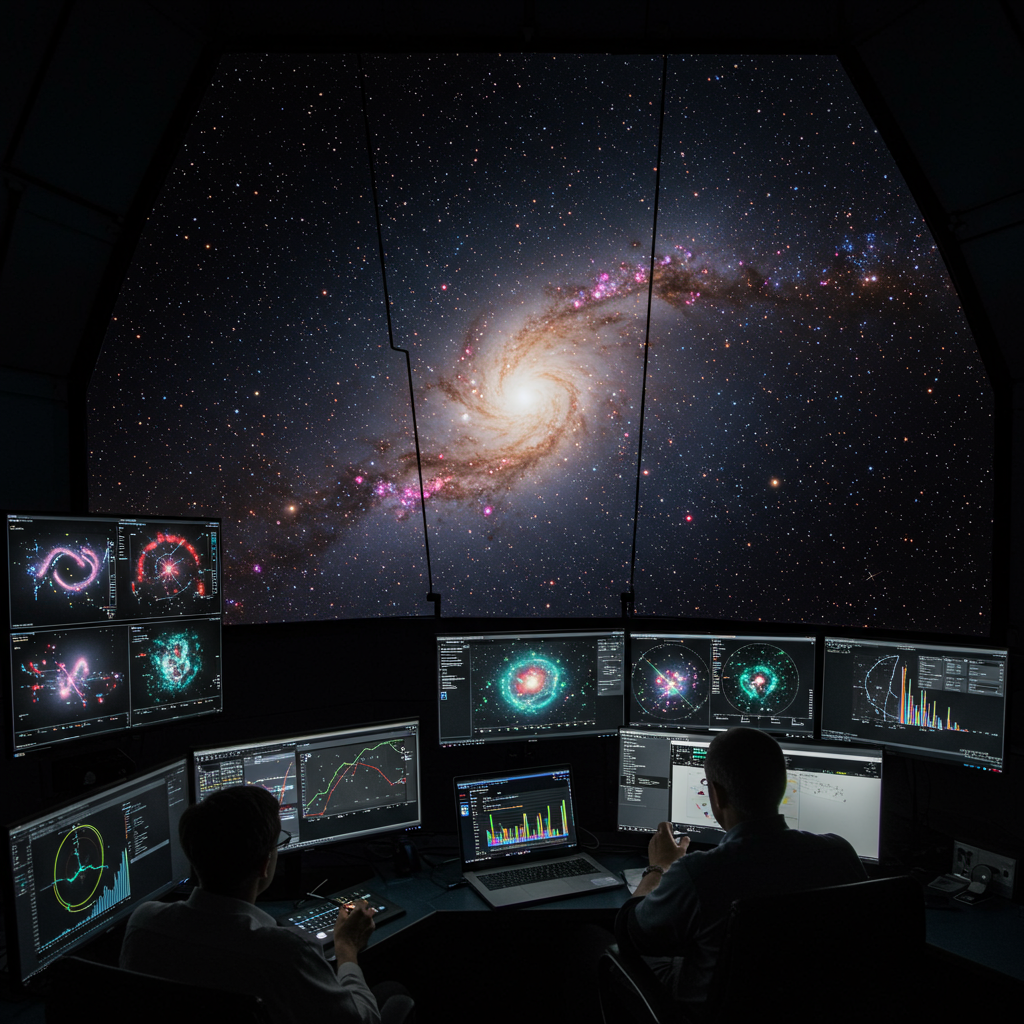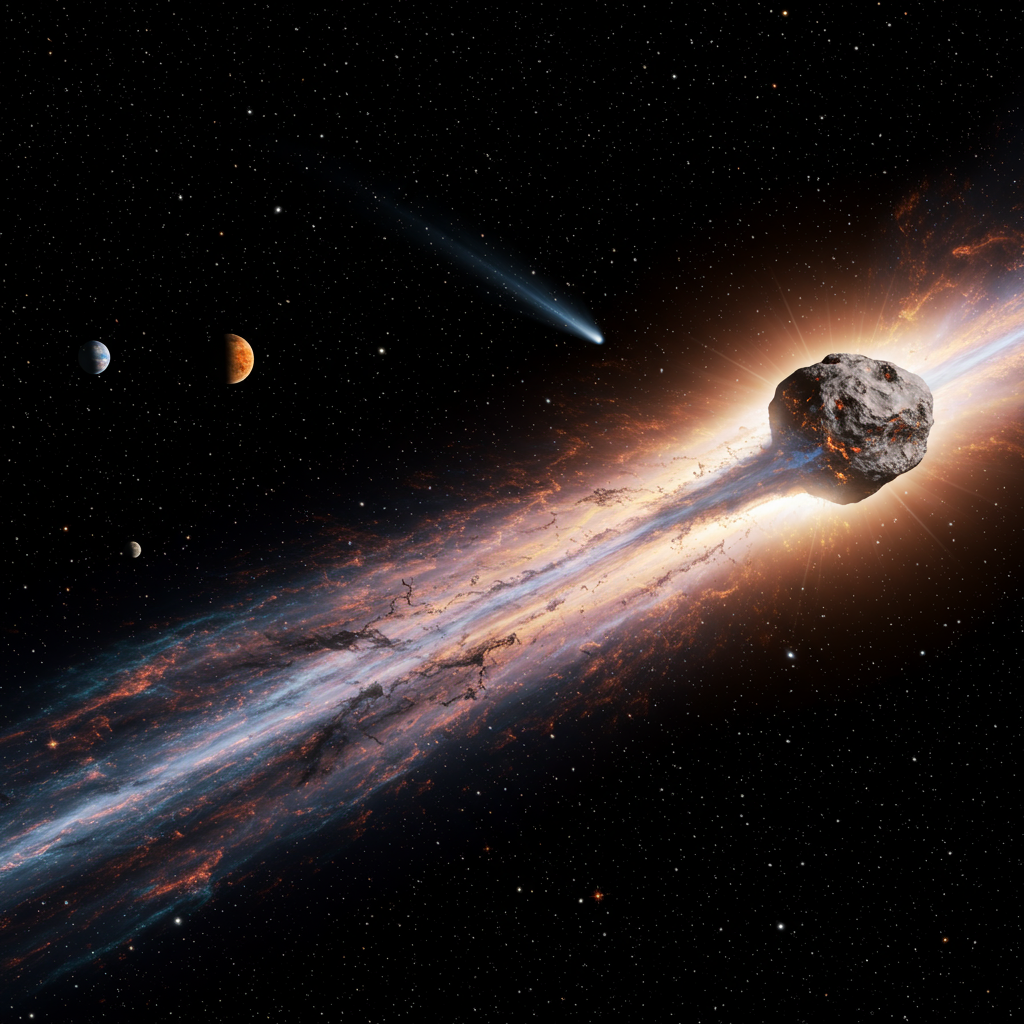Cosmic Mystery Solved? Astronomers Find Elusive ‘Missing’ Matter
For decades, astronomers have faced a puzzling problem: about a third of the universe’s “normal” matter – the stuff that makes up stars, planets, and galaxies – seemed to be missing. Cosmological models predicted its existence, but observations couldn’t find it all. Now, a groundbreaking discovery using advanced X-ray telescopes appears to have located a significant chunk of this elusive material, precisely where the models said it should be.
Astronomers have identified a colossal filament of hot gas stretching between four galaxy clusters in the nearby universe. This immense structure is estimated to contain around 10 times the mass of our own Milky Way galaxy and could account for a substantial portion of the universe’s unaccounted-for normal matter.
“For the first time, our results closely match what we see in our leading model of the cosmos – something that’s not happened before,” states lead researcher Konstantinos Migkas of Leiden Observatory. “It seems that the simulations were right all along.”
Where Was the Missing Matter Hiding?
Scientists theorized that this unseen matter, often referred to as Warm-Hot Intergalactic Medium (WHIM), likely resides in vast, faint threads of gas that form the cosmic web. This web is the large-scale structure of the universe, a network of filaments connecting dense nodes like galaxy clusters, surrounding enormous voids.
While filaments have been detected before, isolating and characterizing their properties has been incredibly challenging. Their diffuse nature makes their light difficult to distinguish from surrounding galaxies, black holes, and other bright objects.
This new research stands out as one of the first successful attempts to not only find such a filament but accurately measure its characteristics, confirming its composition of hot, intergalactic gas.
Using X-ray Vision to Spot the Invisible
The crucial breakthrough was achieved by combining observations from two powerful X-ray space telescopes: the European Space Agency’s (ESA) XMM-Newton and JAXA’s Suzaku.
Suzaku provided a wide-area map of the faint X-ray emissions from the filament.
XMM-Newton, with its superior precision, was then used to pinpoint and remove contaminating X-ray sources, such as supermassive black holes located within the filament.
This meticulous process allowed astronomers to isolate the pure signal from the filamentary gas itself.
“Thanks to XMM-Newton we could identify and remove these cosmic contaminants, so we knew we were looking at the gas in the filament and nothing else,” explains co-author Florian Pacaud of the University of Bonn. “Our approach was really successful, and reveals that the filament is exactly as we’d expect from our best large-scale simulations of the Universe.”
A Bridge Between Galaxy Clusters
The newly found filament is located within the Shapley Supercluster, one of the most massive structures in the nearby universe, containing over 8,000 galaxies. The filament diagonally traverses this supercluster, stretching for an astonishing 23 million light-years – equivalent to crossing the Milky Way about 230 times end-to-end. Clocking in at over 10 million degrees Celsius, it is a truly massive and incredibly hot structure bridging two pairs of galaxy clusters.
Validating Cosmological Models
This discovery is significant for several reasons:
- Validating Simulations: It provides strong observational evidence supporting the predictions of standard cosmological models and simulations regarding the location and nature of the missing baryonic matter.
- Understanding the Cosmic Web: It sheds light on how galaxy clusters, the universe’s densest regions, are connected over vast cosmic distances by these filamentary structures.
- Setting a Benchmark: The technique used to detect and characterize this faint filament establishes a new method for future searches for the cosmic web’s elusive threads.
While this discovery finds a significant portion of the “missing” normal matter, it’s important to remember that normal matter only accounts for about 5% of the universe’s total mass-energy. The vast majority – about 95% – is made up of mysterious dark matter and dark energy, which remain undetected directly.
Efforts to map the cosmic web and understand these cosmic mysteries continue with missions like ESA’s Euclid, launched in 2023, which is specifically designed to explore the structure and history of the cosmic web and delve deeper into the nature of dark matter and energy. This new finding marks a critical step in completing our picture of the universe’s structure.




